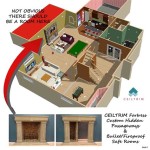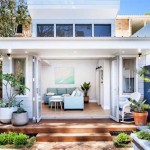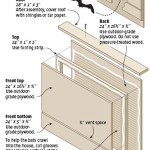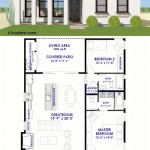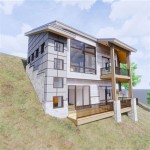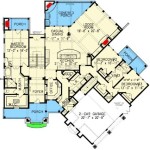Guest House Plans: Design Your Perfect Retreat
Designing a guest house is a significant undertaking, requiring careful consideration of various factors to ensure the space meets both the needs of the homeowner and the comfort requirements of their guests. Accessing well-structured guest house plans, often available in PDF format, is a crucial first step in the planning process. These plans provide detailed blueprints, material lists, and construction guidelines, enabling a smoother and more efficient building process. The ideal guest house design balances functionality, aesthetics, and integration with the existing property.
The process of selecting and utilizing guest house plans involves several key stages. Initially, the homeowner must define the purpose of the guest house. Will it primarily serve as accommodation for visiting family and friends, or will it also function as a home office, recreational space, or potential rental unit? The intended use directly influences the required square footage, layout, and included amenities. For instance, a guest house intended for long-term stays will necessitate a more comprehensive design, potentially including a full kitchen, laundry facilities, and ample storage space. Conversely, a guest house primarily for short visits may only require a bedroom, bathroom, and small seating area.
Once the purpose is defined, the homeowner should consider the available building site. This includes evaluating the topography, soil conditions, existing landscaping, and zoning regulations. A sloped lot may require specialized foundation work, impacting the overall cost and timeline of the project. Furthermore, zoning laws may dictate setbacks, height restrictions, and permissible uses for accessory dwelling units (ADUs), which often include guest houses. Consulting with local planning authorities and obtaining the necessary permits is an essential step to avoid potential legal complications. Analyzing the site's orientation to the sun is also important for maximizing natural light and minimizing energy consumption.
The aesthetic design of the guest house should harmonize with the architectural style of the main residence and the surrounding landscape. Maintaining a cohesive look enhances the overall property value and creates a visually appealing environment. This can be achieved through consistent use of building materials, colors, and architectural details. For example, if the main house features a traditional farmhouse style, the guest house should incorporate similar elements such as board-and-batten siding, a gable roof, and a covered porch. Conversely, a modern main house might be complemented by a guest house with clean lines, large windows, and a minimalist design.
Interior design considerations are equally important. The layout of the guest house should be intuitive and maximize the use of available space. Open-concept designs can create a feeling of spaciousness, even in smaller structures. Careful attention should be paid to traffic flow, ensuring easy movement between different areas. The selection of furniture and fixtures should prioritize both comfort and functionality. Multi-purpose furniture, such as sofa beds or storage ottomans, can be particularly useful in maximizing space. Adequate lighting, both natural and artificial, is essential for creating a welcoming and comfortable atmosphere.
Key Point 1: Defining the Purpose and Scope of the Guest House
The initial planning phase of a guest house project revolves around clearly defining its intended purpose. This foundational decision dictates nearly every aspect of the design, from the size and layout to the included amenities. A guest house intended primarily for short-term visits from family and friends will have vastly different requirements compared to one designed for long-term stays or potential rental income. For instance, a short-term guest house might prioritize a comfortable bedroom and a private bathroom, whereas a longer-term residence may necessitate a fully equipped kitchen, laundry facilities, and ample storage.
Consider also the target demographic. Will the guest house primarily accommodate elderly relatives, young adults, or families with children? Each group has unique needs. Elderly guests may require features such as grab bars in the bathroom, ramps instead of stairs, and wider doorways for wheelchair accessibility. Young adults may appreciate a dedicated workspace with sufficient outlets and internet connectivity. Families with children may need a larger living area, childproofed outlets, and durable flooring. Accurately assessing the anticipated needs of the potential occupants is crucial for creating a comfortable and functional space.
The intended use also impacts the choice of building materials and finishes. For a rental unit, durability and ease of maintenance are paramount. Selecting materials that can withstand frequent use and are easy to clean will help minimize long-term maintenance costs. For a guest house intended solely for personal use, the homeowner may prioritize aesthetics and choose higher-end finishes. However, even in this scenario, it is wise to consider the long-term maintenance implications of different material choices.
Finally, the homeowner should consider the potential for future changes in use. While the initial purpose may be clear, circumstances can change over time. Designing a guest house with some degree of flexibility can increase its long-term value and utility. For example, incorporating a small kitchenette even if it's not initially needed can make the space more adaptable to future needs. Similarly, ensuring that the guest house is adequately insulated and wired for potential HVAC upgrades can improve its comfort and energy efficiency in the long run.
Key Point 2: Site Considerations and Regulatory Compliance
The available building site and local regulations are critical determinants of the guest house design. The topography, soil conditions, and existing landscaping all influence the feasibility and cost of construction. Moreover, zoning laws and building codes dictate permissible uses, setbacks, height restrictions, and other crucial parameters. Ignoring these factors can lead to costly delays, design revisions, and even legal penalties.
The topography of the site plays a significant role in foundation design. A relatively flat site simplifies construction and reduces the need for extensive excavation or retaining walls. However, a sloped site can present challenges such as soil erosion, drainage issues, and increased foundation costs. In such cases, specialized foundation techniques, such as pier-and-beam or stepped foundations, may be necessary. Thoroughly assessing the site's topography and obtaining professional geotechnical reports can help identify potential challenges early in the planning process.
Soil conditions also impact foundation design. Unstable soil, such as expansive clay or loose sand, may require special soil stabilization techniques or a more robust foundation system. A geotechnical report can provide detailed information about the soil's composition, bearing capacity, and potential for expansion or contraction. This information is crucial for selecting the appropriate foundation type and ensuring the long-term stability of the structure.
Existing landscaping should be carefully considered. Preserving mature trees and integrating the guest house into the existing landscape can enhance its aesthetic appeal and reduce site disturbance. However, it is important to ensure that the construction process does not damage existing vegetation. Protecting trees during construction may involve installing temporary fencing, avoiding excavation near root zones, and using specialized pruning techniques.
Compliance with local zoning laws and building codes is non-negotiable. Zoning regulations dictate permissible uses for accessory dwelling units (ADUs), which often include guest houses. These regulations may specify minimum lot sizes, setback requirements, height restrictions, and parking requirements. Building codes establish minimum standards for structural integrity, fire safety, and energy efficiency. Obtaining the necessary permits and adhering to all applicable regulations is essential for ensuring the legality and safety of the guest house.
Key Point 3: Design Aesthetics and Interior Functionality
The aesthetic design of the guest house should complement the architectural style of the main residence and the surrounding landscape, creating a cohesive and visually appealing environment. The interior design should prioritize functionality and maximize the use of available space, ensuring a comfortable and welcoming experience for guests. A harmonious blend of aesthetics and functionality is key to creating a truly successful guest house.
The exterior design should echo the architectural style of the main residence. This can be achieved through consistent use of building materials, colors, and architectural details. For example, if the main house features a craftsman style, the guest house should incorporate elements such as exposed rafters, tapered columns, and shingle siding. Maintaining a consistent architectural vocabulary creates a sense of visual unity and enhances the overall property value. However, it is also possible to introduce subtle variations to create visual interest. For instance, the guest house could incorporate a slightly different roofline or a unique window design while still maintaining a cohesive overall style.
The interior layout should be intuitive and maximize the use of available space. Open-concept designs can create a feeling of spaciousness, even in smaller structures. Careful attention should be paid to traffic flow, ensuring easy movement between different areas. In smaller guest houses, consider incorporating multi-functional spaces. For example, a living area could double as a workspace with the addition of a small desk and adequate lighting. Similarly, a dining area could also serve as a game room with the addition of a folding table and some board games.
The selection of furniture and fixtures should prioritize both comfort and functionality. Multi-purpose furniture, such as sofa beds or storage ottomans, can be particularly useful in maximizing space. Consider incorporating built-in storage solutions to minimize clutter and maximize usable floor area. In bathrooms, space-saving fixtures such as wall-mounted sinks and corner showers can be beneficial. The color palette should be calming and inviting, creating a relaxing atmosphere for guests. Neutral colors with pops of color can be a good choice, as they are versatile and appeal to a wide range of tastes.
Adequate lighting, both natural and artificial, is essential for creating a welcoming and comfortable atmosphere. Maximize natural light by incorporating large windows and skylights. Strategic placement of windows can also provide ventilation and cross-breezes, reducing the need for air conditioning. Supplement natural light with a combination of ambient, task, and accent lighting. Ambient lighting provides overall illumination, while task lighting focuses on specific areas such as desks or reading chairs. Accent lighting highlights architectural features or artwork, adding visual interest to the space. Dimmable lighting controls can allow guests to customize the lighting levels to their preferences.

Plan 59040 Cozy Cottage Retreat Guest House Getaway

House Plan 1374 Mountain Retreat Rustic

Skiff Retreat Coastal House Plans From Home

Inlet Retreat House Plan Southern Living Plans

1 Bedroom Cottage Guest House With Vaulted Great Room

Katheko Ranch Style House Plan Luxury

House Plan Saint Germain Sater Design Collection

Open Concept Ranch Floor Plans

Katheko Ranch Style House Plan Luxury

Free Simple Two Story House Plans Online Edit Available
Related Posts

